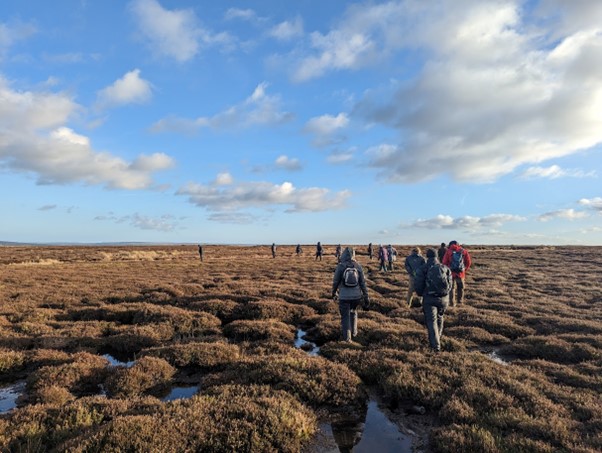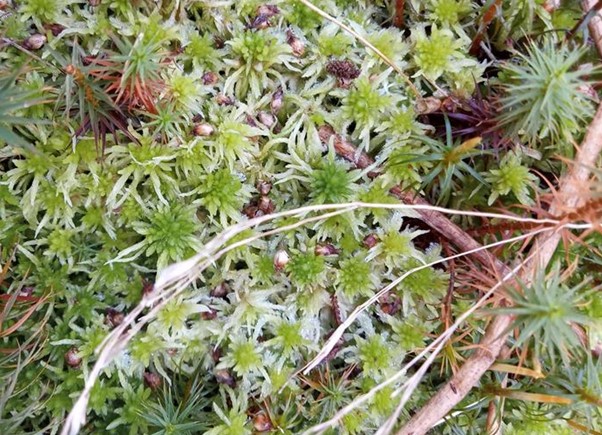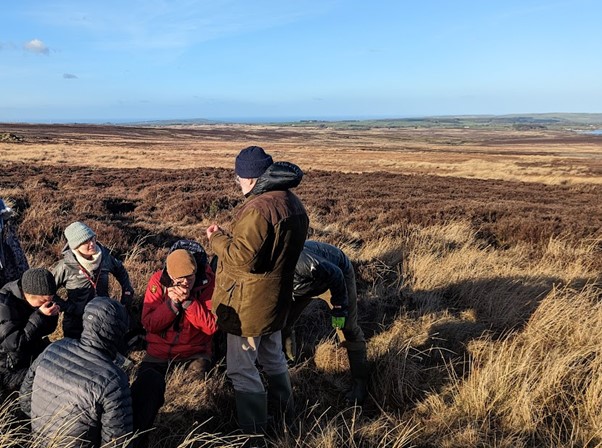
Look Wild; Peatland in the North York Moors
-
Date posted: 30/03/2023
-
Time to read: 5 minutes
Despite the name, the North York ‘Moors’ National Park is only around one third moorland, and although they seem like one of the last wild landscapes in the UK, these moorlands have actually been shaped by human activity for the last 5,000 years.
Historically, the moorland would have had many more trees than we see today, and the ground would have been much wetter. Over time these woodlands have been cleared to make way for grazing animals, and in the last 100 years the moorland has been substantially drained. New ditches and dykes were built to lower the water table and remove surface water, so that the land was more suitable for agriculture, and commercial forestry was planted as part of the post-war effort to be a more self-sufficient country. Our upland wet heath and blanket bog habitats have been particularly damaged by this drainage and planting.
With the growing concern about climate change, conversation is turning towards what we can do to slow the changes, and one of the leading options in the UK is to restore our moorland habitats. Research has found that blanket bog can capture ~3.5 tonnes of CO2 per hectare per year, and evidence suggests that healthy wet heath, with the right sphagnum species, may be able to do the same[1]. Restoration of these areas is therefore very important.

Sphagnum mosses can hold up to 20 times their own weight in water, and they also make this water slightly acidic. The individual sphagnum plants grow very closely together, sometimes forming tufts, and the dense clusters they form pull water up and hold it above ground. These waterlogged, acidic conditions prevent plants from fully decomposing when they die, so rather than the carbon within them being released into the atmosphere, it is deposited as peat instead.
There are 34 species of Sphagnum moss in the UK, 10 of which are found in the North York Moors. As they are such a crucial part of many moorland habitats, it is important we can identify them when we are surveying. On 30 January this year, staff from the Conservation department of the North York Moors National Park Authority joined members of Whitby Naturalists for a Sphagnum moss training day, led by expert Alan Ritson. Although identifying the individual species can be hard, you can tell if a moss is a sphagnum moss as they have a dense tuft of branches at the top of the stem, which other mosses do not. We spent the morning in a classroom, running through the different species, then in the afternoon we went out onto Danby Moor to practise our newfound skills.
Although different species have slightly different peat forming abilities, the presence of sphagnum is a good indicator of how healthy the moorland is. Lots of sphagnum likely means the moorland has not been drained as much, and it may even be forming peat. Low numbers or no sphagnum can mean that the habitat is in poor condition. This is why all sphagnum records are important.
If you are ever out on a moorland and spot a sphagnum moss, it is always helpful to take a picture of it and record it though Look Wild on iNaturalist. National Park staff can access these records and some can identify the species just from a photo. This helps us find areas that may need further surveys and restoration.
[1]Pike (2021) Peat and Peatlands, Northern Ireland Research and Information Centre Briefing Paper, 32/21

Have you spotted any sphagnum mosses other peat plants?
Join i-Naturalist and start identifying nature near you today! LookWild is a brilliant citizen science project that helps contribute to our data and knowledge of wildlife and habitat health across the UK.
This Blog was written by Zara Hanshaw, Assistant Ecologist from North York Moors National Park Authority.